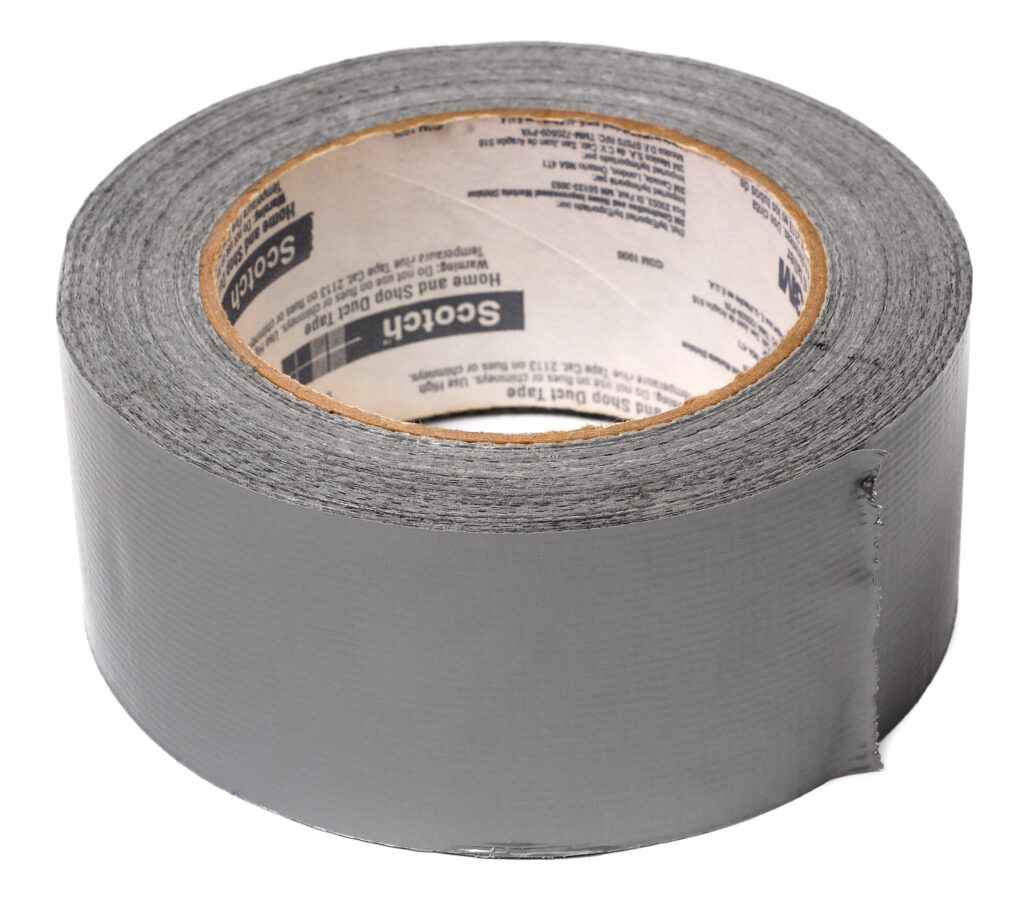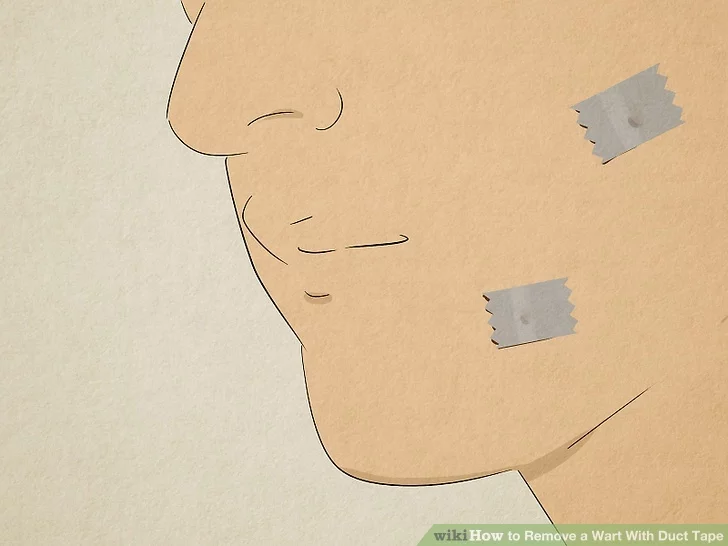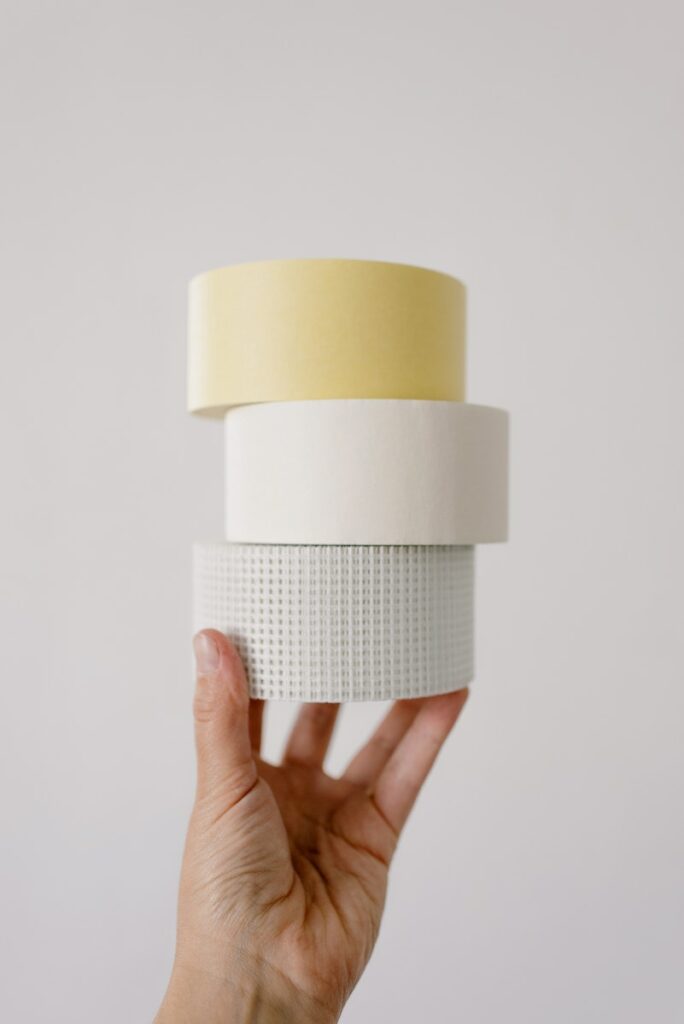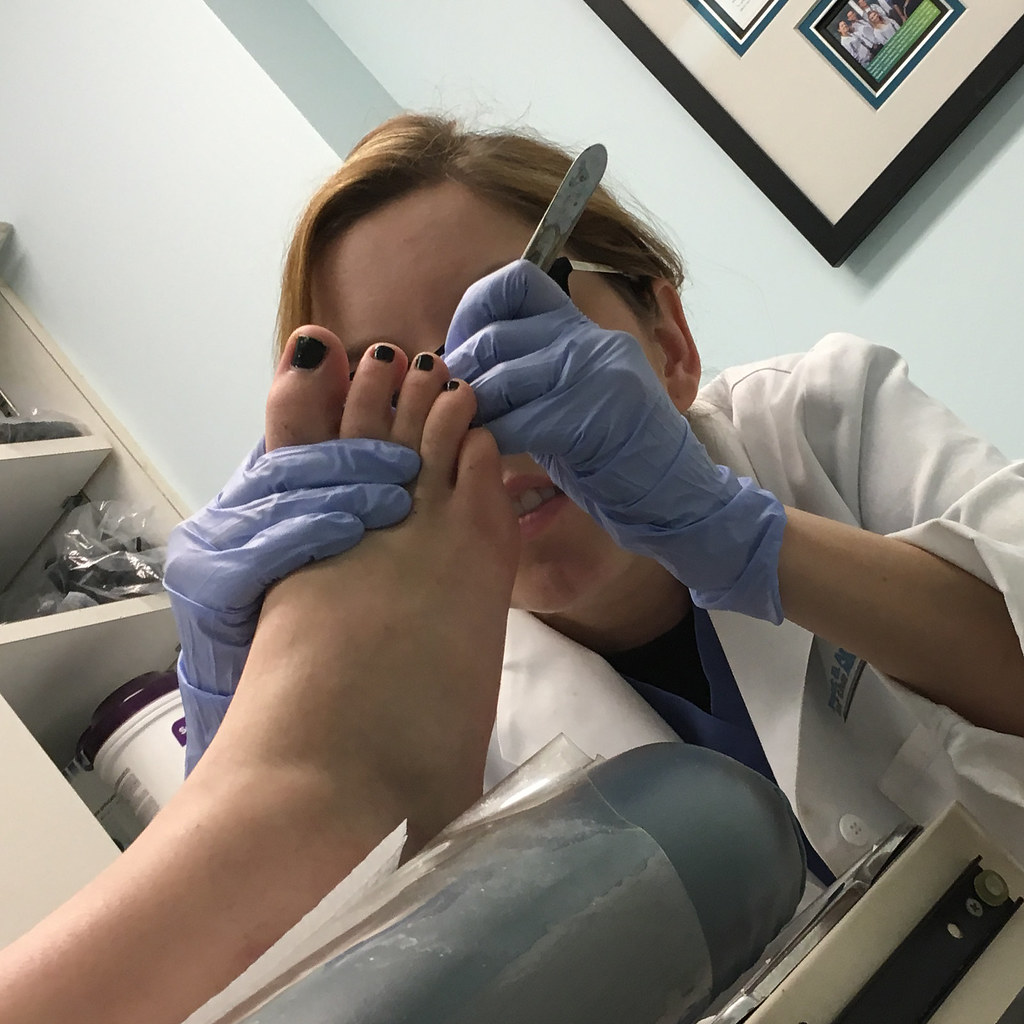The use of duct tape to remove warts may seem like a strange and unconventional remedy, but according to a dermatology journal article, it has proven to be an effective and affordable treatment. In fact, duct tape has shown better results than other conventional therapies such as acid and cryosurgery. While some doctors have praised the use of duct tape as a painless and effective alternative, others argue that it may not be as effective as more aggressive treatments like cryotherapy. However, research has shown that duct tape is not only more cost-effective but also has a higher cure rate for warts. So, should we consider using duct tape as a standard practice for wart removal? Read on to discover the surprising conclusion.
Benefits of Using Duct Tape for Wart Removal
Cost-effective solution
Duct tape has emerged as a cost-effective and efficient solution for removing warts. In a study comparing various wart treatments, duct tape was found to be more effective than many conventional therapies. Moreover, the cost of duct tape is significantly lower than prescription treatments, making it an accessible and affordable option for individuals seeking wart removal.
Non-invasive and painless
Unlike invasive and painful treatments such as cryosurgery or laser therapy, duct tape offers a non-invasive and painless approach to wart removal. Many patients prefer this method as it does not require any surgery or destructive therapies. Duct tape occlusion is a simple and hassle-free process that involves applying duct tape directly to the affected area, allowing for convenient and comfortable treatment.
Comparable effectiveness to other treatments
Research studies have shown that duct tape is comparable in effectiveness to other common wart treatments. In fact, duct tape has been found to be even more effective than cryotherapy, a commonly used treatment that involves freezing the wart with liquid nitrogen. The effectiveness of duct tape occlusion has been demonstrated in multiple studies, establishing it as a viable option for wart removal.

Comparing Duct Tape to Cryotherapy
Duct tape as an alternative to cryotherapy
Cryotherapy, the process of freezing warts with liquid nitrogen, is a popular treatment for wart removal. However, it can be expensive, painful, and inconvenient for patients. Duct tape offers a viable alternative to cryotherapy, providing a cost-effective and non-invasive solution that is easy to apply and comfortable for patients.
Effectiveness of cryotherapy
While cryotherapy is widely used, its effectiveness has been called into question. In many studies, cryotherapy has shown limited success in completely removing warts. Some studies even indicate that cryotherapy is not significantly better than a placebo treatment. Considering the potential adverse effects and discomfort associated with cryotherapy, exploring alternative treatments like duct tape becomes even more relevant.
Cost and convenience comparison
In terms of cost and convenience, duct tape clearly has an advantage over cryotherapy. Duct tape is easily accessible and significantly cheaper than cryotherapy or other prescription treatments. Patients can apply duct tape themselves at home, eliminating the need for frequent clinic visits and reducing the overall treatment cost.
Critics of Duct Tape Treatment
Opposing viewpoints from doctors
While many doctors have lauded duct tape treatment and have been using it as a painless and effective therapy for years, there are still opposing viewpoints within the medical community. Some doctors have criticized the study design that compared duct tape to cryotherapy, arguing that the cryotherapy treatment duration was insufficient and that more aggressive treatments should have been used for a fair comparison.
Concerns about study design
Critics of duct tape treatment have expressed concerns about the study design, raising doubts about the validity of the findings. Some argue that the ten-second cryotherapy application used in the study was too short and did not accurately represent the full potential of cryotherapy. These opposing viewpoints highlight the ongoing debate within the medical community regarding the efficacy of duct tape treatment for wart removal.
Arguments for more aggressive treatments
In contrast to duct tape treatment, some doctors advocate for more aggressive treatments for wart removal. They argue that techniques such as blistering or cutting out the wart may lead to higher cure rates. While these approaches may be effective, they often involve more pain, tissue damage, and potential complications, which should be taken into consideration when deciding on the appropriate treatment.

Effectiveness of Duct Tape Occlusion
Comparison to cryotherapy treatment
Multiple studies have demonstrated the effectiveness of duct tape occlusion for wart removal. When compared to cryotherapy, duct tape treatment has shown comparable or even superior results. Duct tape has been found to be highly effective in removing warts without the need for invasive procedures or expensive treatments.
Superiority of duct tape in multiple studies
Research studies have consistently shown the superiority of duct tape in terms of effectiveness and cost. In a comprehensive analysis of various wart treatments, duct tape outperformed other therapies, including prescription treatments. The high success rate and affordability of duct tape make it an attractive option for individuals seeking a convenient and effective wart removal solution.
Cost-effectiveness and safety
In addition to being effective, duct tape occlusion offers a cost-effective and safe treatment option. Compared to other treatments, duct tape is significantly cheaper, making it accessible to a wider range of patients. Furthermore, duct tape occlusion is a non-invasive, painless procedure that carries minimal risks, reducing the likelihood of complications or adverse reactions.
https://www.wikihow.com/Remove-a-Wart-With-Duct-Tape
 .
.
Procedure and Application of Duct Tape
Steps to applying duct tape on warts
The application of duct tape for wart removal is a relatively simple process. First, clean the affected area thoroughly with mild soap and water. Then, dry the area completely before applying a piece of duct tape that is slightly larger than the wart. Press the tape firmly onto the wart, ensuring complete adhesion. It is important to change the duct tape regularly, ideally every 6-7 days, to promote effective treatment.
Recommended duration of occlusion
Experts recommend leaving the duct tape in place for a specific duration to ensure optimal results. The recommended duration of occlusion ranges from 1 to 2 months, depending on the individual’s response and the size of the wart. It is crucial to follow the recommended timeline and avoid removing the duct tape prematurely to achieve the desired outcome.
Tips for effective treatment
To maximize the effectiveness of duct tape occlusion, it is essential to follow a few key tips. Firstly, make sure to keep the affected area clean and dry to prevent any bacterial or fungal infections. Secondly, apply the duct tape firmly and ensure proper adhesion to promote effective treatment. Lastly, be patient and consistent with the application of duct tape, following the recommended duration, to increase the chances of complete wart removal.
Potential Risks and Side Effects
Minimal risks associated with duct tape
Compared to other wart removal treatments, duct tape occlusion carries minimal risks and side effects. Some individuals may experience mild skin irritation or redness around the treated area, but these effects are generally temporary and well-tolerated. Overall, duct tape is considered a safe and low-risk option for wart removal.
Comparison to potential risks of cryotherapy
In contrast to duct tape treatment, cryotherapy can pose certain risks and potential side effects. The freezing process involved in cryotherapy can result in adverse effects such as blistering, burns, tissue damage, or scarring. Additionally, cryotherapy may cause permanent disability or require additional invasive procedures such as lidocaine injections. These potential risks should be carefully evaluated when considering cryotherapy as a treatment option.
Avoiding complications and adverse reactions
To minimize the risks associated with wart removal treatments, it is crucial to follow the recommended guidelines and seek professional advice if needed. For duct tape occlusion, ensuring proper hygiene, maintaining consistent application, and adhering to the recommended duration can help prevent complications and adverse reactions. In the case of cryotherapy, consulting with a healthcare professional and monitoring potential side effects is essential to minimize risks and ensure safe treatment.
Research Studies Supporting Duct Tape Treatment
Noteworthy research articles on duct tape for wart removal
Several research articles have explored the efficacy of duct tape occlusion for wart removal. These studies have provided valuable insights into the effectiveness and cost-effectiveness of this treatment method. Reviewing these articles can help individuals and healthcare providers make informed decisions regarding the use of duct tape for wart removal.
Cochrane review on effectiveness
The Cochrane review, known for its evidence-based approach, has also addressed the effectiveness of duct tape occlusion for wart removal. The review recognizes the potential benefits of duct tape treatment, highlighting its affordability, tolerability, and comparability to other treatments. While some studies have yielded conflicting results, the Cochrane review emphasizes the value of further research to optimize the use of duct tape for wart removal.
Analysis of multiple studies
Numerous studies have contributed to the growing body of evidence supporting the effectiveness of duct tape occlusion. These studies have consistently demonstrated the superiority of duct tape compared to other treatments in terms of both effectiveness and cost. The analysis of multiple studies reinforces the potential of duct tape as a safe, accessible, and efficient wart removal treatment option.
References[edit]
- ^ Jump up to:a b c d Kwok, CS; Gibbs, S; Bennett, C; Holland, R; Abbott (2012). “Topical treatments for cutaneous warts”. Cochrane Database of Systematic Reviews. 9 (9): CD001781. doi:10.1002/14651858.CD001781.pub3. PMC 8101088. PMID 22972052.
- ^ Jump up to:a b Samlaska, Curt (2012). “Response to ‘Question 3 What is the efficacy of duct tape as a treatment for verruca vulgaris?’”. Archives of Disease in Childhood. 96 (9): 897–899. doi:10.1136/archdischild-2011-300533. PMID 21836182. S2CID 206853952.
- ^ Jump up to:a b “Warts and verrucas – Treatment”. nhs choices. Retrieved August 24, 2013.
- ^ “Warts and Verrucas”. patient.info. www.patient.info. Retrieved August 24, 2013.
- ^ “How to get rid of warts”. American Academy of Dertmatology. Retrieved August 24, 2013.
- ^ “Warts and Verrucas”. Bupa. Retrieved August 24, 2013.
- ^ Mayo Clinic Staff. “Plantar Warts”. The Mayo Clinic. Retrieved August 24, 2013.
- ^ Stubbings, Alison; Wacogne, Ian (2011-09-01). “Question 3 What is the efficacy of duct tape as a treatment for verruca vulgaris?”. Archives of Disease in Childhood. 96 (9): 897–899. doi:10.1136/archdischild-2011-300533. ISSN 0003-9888. PMID 21836182.
- ^ Litt, J. Z (1978). “Don’t excise–exorcise. Treatment for subungual and periungual warts”. Cutis. 22 (6): 673–6. PMID 720133.
- ^ Jump up to:a b Focht DR, Spicer C, Fairchok MP (October 2002). “The efficacy of duct tape vs cryotherapy in the treatment of verruca vulgaris (the common wart)”. Archives of Pediatrics & Adolescent Medicine. 156 (10): 971–4. doi:10.1001/archpedi.156.10.971. PMID 12361440.
- ^ Jump up to:a b Williams, Hywel (2003). “Commentary on ‘Duct tape occlusion treatment increased resolution in common paediatric warts’”. Evidence Based Medicine. 8 (2): 58. doi:10.1136/ebm.8.2.58.
- ^ Gibbs, S; Harvey, I; Sterling, JC; Stark, R (2003). Gibbs, Sam (ed.). “Local treatments for cutaneous warts”. Cochrane Database of Systematic Reviews (3): CD001781. doi:10.1002/14651858.CD001781. PMID 12917913.
- ^ Jump up to:a b de Haen M, Spigt MG, van Uden CJ, van Neer P, Feron FJ, Knottnerus A (November 2006). “Efficacy of duct tape vs placebo in the treatment of verruca vulgaris (warts) in primary school children”. Archives of Pediatrics & Adolescent Medicine. 160 (11): 1121–5. doi:10.1001/archpedi.160.11.1121. PMID 17088514.
- ^ Jump up to:a b Wenner R, Askari SK, Cham PM, Kedrowski DA, Liu A, Warshaw EM (March 2007). “Duct tape for the treatment of common warts in adults: a double-blind randomized controlled trial”. Archives of Dermatology. 143 (3): 309–13. doi:10.1001/archderm.143.3.309. PMID 17372095.
- ^ Van Cleave J, Kemper AR, Davis MM (November 2006). “Interpreting negative results from an underpowered clinical trial: warts and all”. Archives of Pediatrics & Adolescent Medicine. 160 (11): 1126–9. doi:10.1001/archpedi.160.11.1126. PMID 17088515.

Factors Affecting Success of Duct Tape Treatment
Variability in individual responses
The effectiveness of duct tape treatment for wart removal can vary among individuals. Factors such as the size and type of warts, as well as the adherence to the recommended application duration, can affect the success of the treatment. It is important to consider individual differences and tailor the treatment approach accordingly for optimal results.
Types of warts suitable for duct tape treatment
While duct tape has shown effectiveness in treating various types of warts, it may be particularly suitable for certain types. Common warts and plantar warts, in particular, have demonstrated positive responses to duct tape occlusion. However, it is recommended to consult with a healthcare professional to determine the suitability of duct tape treatment for specific wart types.
Duration and consistency of application
The recommended duration and consistent application of duct tape are crucial factors that contribute to the success of treatment. Depending on the size and response of the wart, the duration of occlusion may range from 1 to 2 months. Consistently applying duct tape and changing it regularly promote effective treatment and increase the likelihood of complete wart removal. Adhering to the recommended guidelines is essential to achieve the desired outcome.
Alternative Treatments for Wart Removal
Overview of other treatment options
In addition to duct tape occlusion, several other treatment options are available for wart removal. These options include prescription treatments, over-the-counter medications, surgical procedures, and home remedies. Each treatment has its own advantages and considerations, and the choice of treatment depends on individual preferences, wart characteristics, and medical recommendations.
Comparative effectiveness and cost
When comparing alternative treatment options, effectiveness and cost are important considerations. Prescription treatments may offer higher success rates but at an increased cost. Surgical procedures can provide immediate results but might involve more pain and potential complications. Home remedies and over-the-counter medications often come with lower costs but may be less effective or require longer treatment durations. Evaluating the effectiveness, cost, and potential risks of each option can help individuals select the most suitable treatment for their specific needs.
Considerations for choosing the best treatment
Choosing the best wart removal treatment involves thorough consideration of various factors. Individuals should consider their preferences, the severity and type of warts, associated costs, potential side effects, and the recommendations of healthcare professionals. Discussing the available options and their pros and cons with a healthcare provider can help individuals make informed decisions and select the treatment that aligns with their needs and preferences.
https://www.wikihow.com/Treat-a-Wart-at-Home https://www.health.harvard.edu/diseases-and-conditions/how-to-get-rid-of-warts
Conclusion and Future Research
Mixed evidence on effectiveness of duct tape treatment
The effectiveness of duct tape occlusion for wart removal has been a topic of thorough investigation, with mixed evidence supporting its efficacy. While some studies demonstrate its superiority over other treatments, there are conflicting results in certain research. Therefore, further research is necessary to optimize duct tape treatment protocols and determine its overall effectiveness.
Potential for further research and optimization
Future studies can focus on optimizing duct tape treatment for wart removal. Research can explore variables such as the duration of occlusion, the use of different types or brands of duct tape, and the impact of individual factors on treatment success. Additionally, conducting large-scale randomized controlled trials can provide more robust evidence and help establish duct tape occlusion as a standard treatment for warts.
Importance of individualized treatment approach
Regardless of the research outcomes, it is crucial to recognize the importance of individualized treatment approaches for wart removal. Each person’s experience with warts is unique, and what works for one individual might not work for another. Considering individual preferences, wart characteristics, and medical advice is essential to ensure the most effective and suitable treatment for each individual.
